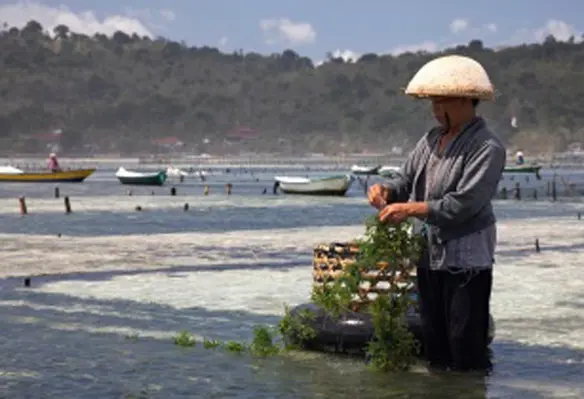The Asia-Pacific region is witnessing considerable advancements and innovative approaches that combine agriculture and aquaculture leading to improved livelihoods for smallholders, according to senior officials from the Food and Agriculture Organization of the United Nations (FAO)
While the practice of adding fish to flooded rice paddies was established hundreds of years ago in China, and is now recognised as one of the country’s Globally Important Agricultural Heritage Systems, the approach is being practiced in many other countries around the region. In more recent years, other agro-aquaculture systems have followed, such as mixing shrimps into flooded paddies. The fish eat the pests in the water and in turn the fish excrement fertilises the plants.
Now, FAO and member countries are studying and promoting new innovations in these traditional practices, taking into account varying socio-economic and environmental conditions. Different from traditional integrated fish farming, the innovative integration of agro-aquaculture is characterised by a number of different approaches.
Introducing these methods helps to improve the income of small rice farmers where innovation in agro-aquaculture can easily double the economic return. These can significantly improve productivity from the crop system. For instance, good rice-fish farming practice can increase the rice yield by 20 per cent while producing tonnes of fish and other aquatic animals.
The methods are being introduced at a regional workshop on innovative agro-aquaculture for blue growth in Asia-Pacific with 25 senior government officials from Bangladesh, China, Indonesia, Lao PDR, Myanmar, Philippines and Viet Nam. The workshop is convened jointly by FAO’s Regional Office for Asia and the Pacific and FAO’s Strategic Programme on Sustainable Agriculture this week in collaboration with the Chinese Academy of Fishery Sciences (CAFS).
This work is helping to strengthen food systems in order to make them more productive and sustainable, one of FAO’s main strategic objectives.
“In promoting innovative integrated agro-aquacultural systems-such as rice-farming systems to areas where these are still not common practices, it is key to take up a truly multi-stakeholder approach. There is an increasing potential to promote such systems in a number of Southeast Asian countries such as Indonesia, Viet Nam, Bangladesh, Philippines, Lao PDR or Myanmar, but also in other areas of the world. South-South Cooperation is a very appropriate platform to scale up innovative rice-fish and other IAA farming systems,” said Hans Dreyer, Director of FAO’s Agriculture Production and Plant Protection Division.
The participants will also visit field sites and share the status of adoption of different systems/practices among the participant countries, both successes and failures. The country teams are also expected to draft national strategies and develop business plans for scaling up appropriate innovative Agro-Aquaculture farming systems and practices based on the in-depth analysis of major constraints and gaps in each of the individual countries.





